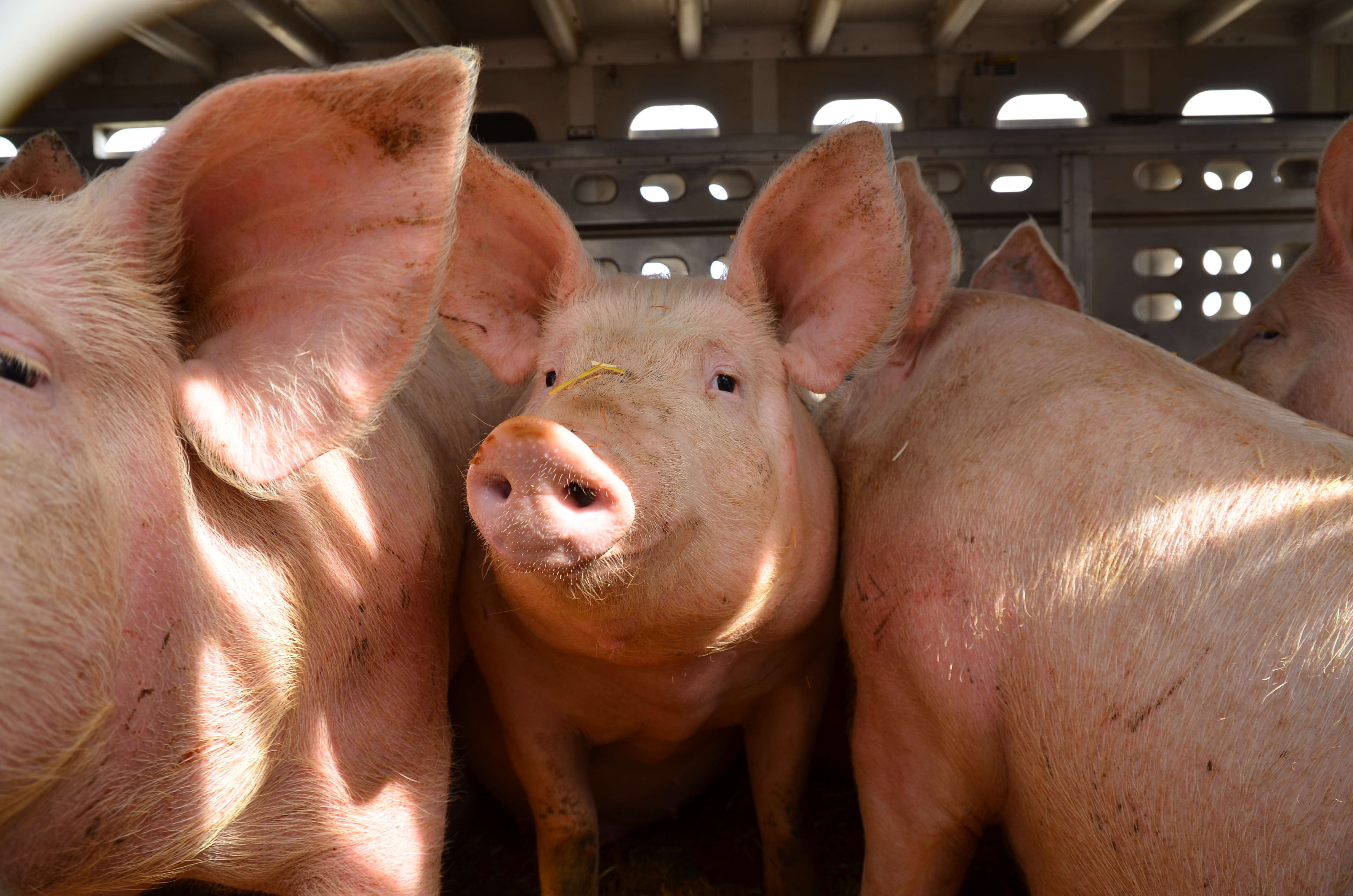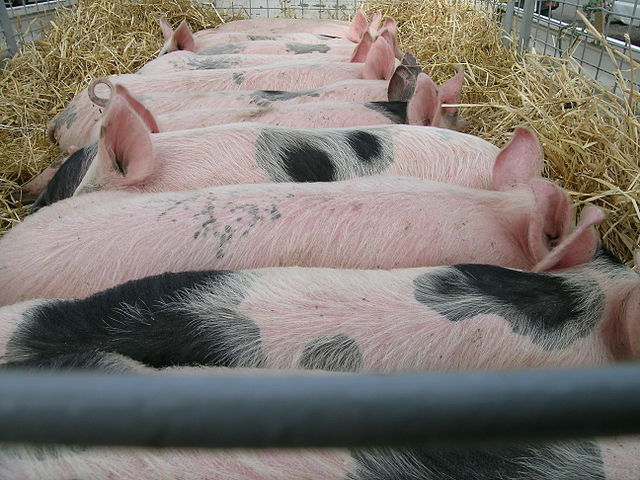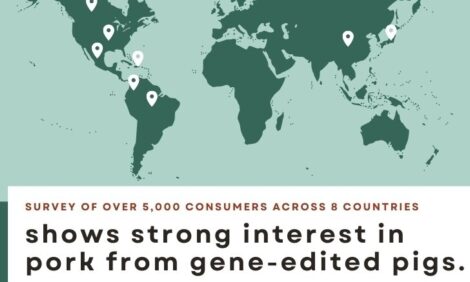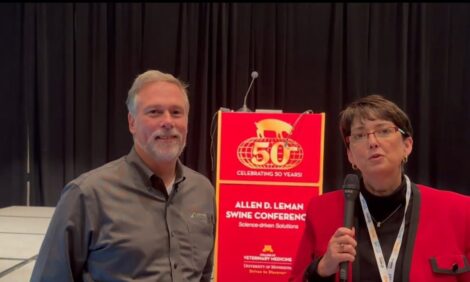



Reviewing the complexities of pig welfare and transportation
Researchers Fiona Rioja-Lang, Jennifer Brown, Egan Brockhoff, and Luigi Faucitano review the latest literature on the factors influencing swine welfare during transport in Canada.In a recent paper in Frontiers in Veterinary Science, researchers have reviewed the existing literature from academic and industry sources on transportation and pig welfare in a Canadian context. Pigs are usually transported at least once in their lifetimes. Whether this occurs as young piglets or when they have reached market weight, significant welfare concerns arise. Transport time, distance, time off feed and water, rest periods, loading capacity and environmental conditions all impact the potential welfare of pigs during transport. These factors can directly or indirectly cause stress, injury, fatigue, dehydration and mortality in pigs. They can also decrease carcass and meat quality at slaughter.

Despite identifying these welfare concerns, researchers have a difficult time studying the role these factors play in welfare. The welfare areas overlap and interact with one another in complex ways – making it challenging for researchers to draw simple conclusions or create hard and fast rules for farmers and welfare advocates to adhere to. Research and field observations indicate that there are trade offs between different welfare and transport options. The research also tends to focus on market weight pigs (weighing 100-135 kgs), leaving regulators with little information on how to address the needs of piglets, boars or cull sows.
With these challenges in mind, what is the best way to transport pigs over long distances and ensure their welfare?
Summary of research findings
The authors indicate that some elements of transportation present greater welfare challenges than others. In general, they surmise that a maximum transport duration cannot be suggested by the current published literature. There were too many confounding variables to attribute better welfare outcomes to a single cause. However, they were able to provide evidence-based recommendations on how to manage elements of pig welfare during the transit process.
Rest intervals
Giving pigs rest intervals has become a popular aspect of welfare during transport. Ideally, pigs would be rested every 8 to 36 hours. However, there may be some unforeseen complications with the practice. Loading and unloading pigs into unfamiliar environments may be stressful for the animals and could present possible biosecurity risks.
Loading and unloading
Based on blood cortisol levels and behavioural indicators, pigs experience increased stress when they are loaded and unloaded on trucks. This means that a short journey with a difficult loading process could cause more stress than a longer journey with a smooth loading procedure. This research finding makes rest periods over longer journeys more complex, as frequent loading and unloading into unfamiliar environments (and with unfamiliar pigs) was associated with weight loss and increased stress levels in the pigs.
Vehicle type
The researchers also found that the type of vehicle used to transport swine has a great impact on welfare. Large pot-belly trailers have shown poorer welfare outcomes when compared to other forms of transport. This is due to varying ambient temperatures in the trailer, high loading densities, and the requirement for pigs to negotiate turns and ramps when loading and unloading from the trailer. The researchers concluded that the swine industry would benefit from further studies of vehicle design, since air-flow patterns, vibration rates, insulating and cooling systems vary between trailers. These factors influence the stress levels and behaviour of pigs; more research is needed in this area.

Environmental conditions
In general, environmental conditions are associated with a pig’s ability to cope with the stimuli associated with transportation. Factors like ambient temperature were the largest contributor to transport losses. Since pigs don’t sweat and cannot wallow to lower their body temperature while in transit, they are more susceptible to heat stress. However, the stresses associated with environmental conditions can be mitigated.
The proper use of bedding (preferably straw) can help pigs cope with extremely high and low temperatures. Ensuring the trailers are properly ventilated and that the pigs have access to misting and sprinkling systems also reduces transport deaths.
Loading density
Making recommendations on the appropriate loading density of pigs was challenging for the researchers. The ideal loading density would change depending on the size/type of the pig, the ambient temperature and the amount of time pigs had to travel. Due to the economic incentive to move as many pigs as possible in one trip, establishing best-practices in this area would be a boon to the Canadian swine industry.
Evidence suggests that when the loading density is higher than 235kg/m², pigs are not able to lie down and rest. This lower space allowance has been associated with increased mortality rates, and increased rates of injury on arrival at the slaughter plant. The ideal ideal transportation scenario would give pigs enough space to lie down and rest, but not be given so much space that they could fall down as the vehicle moves or roam too freely around the truck. However, the research in this area is not robust. It is not possible to make evidence-based recommendations for the Canadian swine industry at this time.
Feed and water
It was difficult to make appropriate recommendations on the way to water and feed pigs before transport. Researchers identified certain behavioural benefits (easier handling) to fasting the pigs before they went to slaughter. However, these benefits were not seen in all circumstances. Also, the duration of fasting can vary significantly depending on the amount of time spent travelling and the length of time pigs spent at the slaughterhouse before being processed. Additional research is required before best-practices can be established.

Conclusions
The literature in the area tends to focus on how to make improvements to pig welfare but does not offer readily applicable rules that are useful for the industry. The gaps in the research also mean that farmers and processors who do not deal with market pigs are left with little guidance. These gaps present significant challenges for regulating the industry as a whole. At this time, robust research is needed on this aspect of the swine industry. Geographic and logistical considerations mean that transport times are only going to become more complex; we need evidence to stay ahead of the curve.
You can read the full article here.






